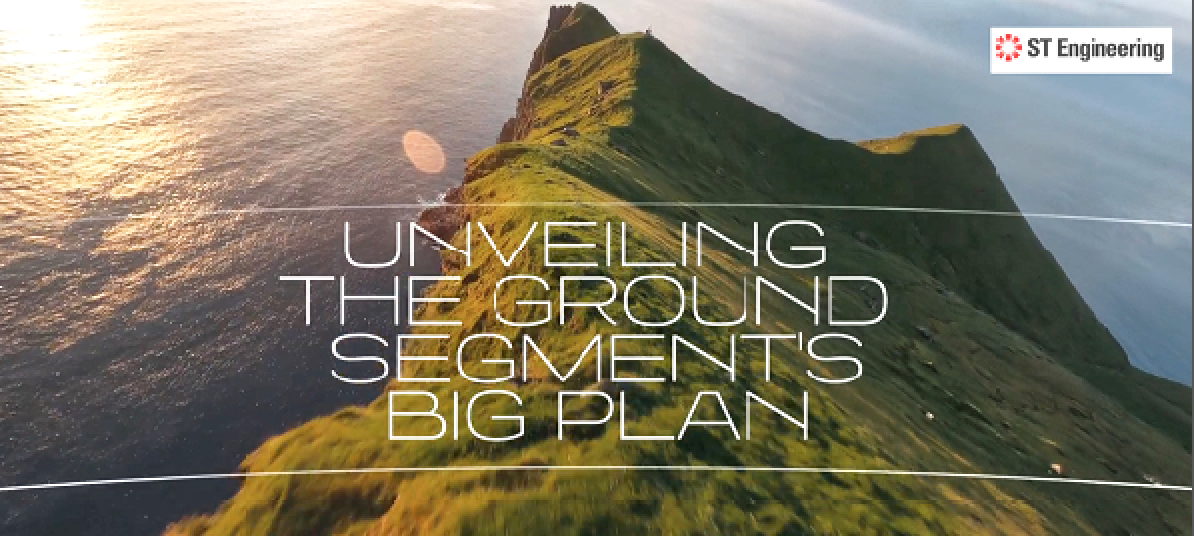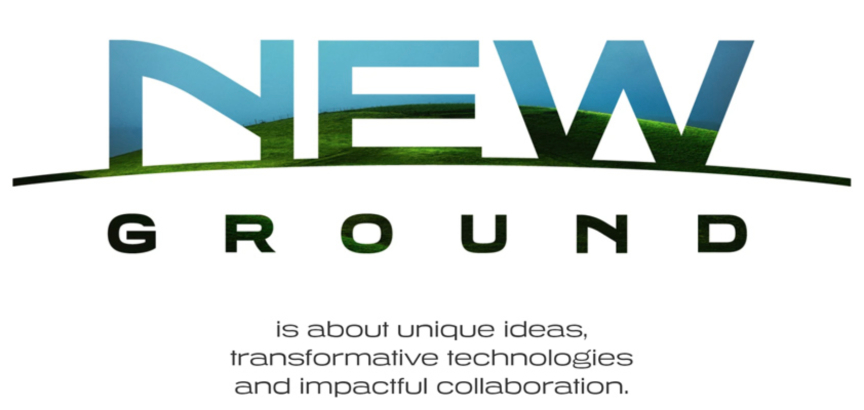The New Space journey starts... and ends... on the ground... A discussion with Frederik Simoens on how the future of satellite connectivity is driven by the relationship between space and ground innovation.
We are hearing about a New Ground movement, spearheaded by ST Engineering iDirect. Can you explain what this is?

Frederik Simoens
Our industry is going through some important changes at the moment. There are technological advances in the space segment (so-called New Space), and IT/telco convergence on theground. Our New Ground movement aims to provide an answer to these evolutions.
Ground systems are where, in my view, the real magic of satellite communications happens:
The waveforms, the efficiency of the communications, Quality of Experience (QoE), and the achievable throughput are completely determined by the ground segment.
Today we’re seeing ground-based space technologies evolve from physical structures and standalone networks to virtual environments in the cloud. We’re also seeing a shift to allow satellite to blend in seamlessly with every other type of access technology to create full interoperability within the end-to-end converged 5G network.
Our industry must orchestrate satellite services across multi-orbit and terrestrial links to provide more flexibility in a cloud-based environment and facilitate this transformation. The New Ground movement seeks to highlight and facilitate the advancements of the ground segment, driven by these technological progressions and shifts, to create a fully transparent multi-access and multi-orbit future. We consider it integral to bringing our industry’s vision for technology and service innovation to life and taking it to a critical next level.
How are the satellite and telco industries evolving and what implications does this have for the ground segment?
Frederik Simoens
We identify two key evolutions driving a momentous change in the ground segment. On the one hand, we have New Space. This is a term that describes the innovations that are making satellites more powerful, pushing the industry to the cusp of the biggest transformation in its history. This involves a move from GEO satellites to a hybrid mix of GEO, LEO and MEO and Non-Geostationary Orbits (NGSOs). Satellites are becoming software defined and dynamic offering new possibilities and greater flexibility.
On the other hand, Telco is moving toward the 5G mobile standard, which will be a universal architecture integrating every form of access technology into one common network. Telco is also adopting critical IT advances like standardization, virtualization, and orchestration to improve the speed, scale, cost, and flexibility of service delivery.
Satellite has a significant role to play in the evolution of the Telco industry as it brings unique attributes such as its geographical reach which connects remote regions. As an industry we need to understand the changes that are occurring with respect to 5G and New Space to accelerate and ensure a successful transition and to ensure that satellite takes its place as an integral part of the new connectivity landscape.

What challenges exist for ground segment providers in making this happen? Tell us more about what roles orchestration, virtualization and standardization play?
Frederik Simoens
There are multiple challenges that face ground segment providers as the changes that are going on in space encompass a lot of new elements, capabilities and innovations. New constellations will comprise hundreds, even thousands of high-capacity satellites that form a dynamic network. Therefore, the ground systems we oversee must work with satellites in multiple orbits, across multiple bandwidths and with multi-access technologies. As the ground segment industry, we can leverage innovation enablers such as orchestration, virtualization and standardization to ensure seamless and dynamic service delivery. Let me offer some examples of how these technologies apply:
Orchestration will allow Service Providers to coordinate and access multiple paths over LEO, MEO, GEO and terrestrial links to provide more flexibility and higher scalability in a hybrid, cloud-based environment. It also ensures that services are implemented in an automated, expedient and seamless manner as needed.
Virtualization brings improved scalability, performance and security. It allows customers to easily scale up or scale down deployments in a dynamic manner. It will also reduce overall operational complexity and will also be necessary to get to a fully digitalized ground network that can integrate within the telecom 5G fabric.
Standardization will also be crucial to facilitate interoperability which will in turn advance our industry as a whole. There are many standards that will need to be developed and adopted: the interface with satellites, at the gateway and on the modem. This will take an industry-wide commitment to work with standards such as MEF, 3GPP and 5GPP that already exist in the terrestrial world. Our job now is to adopt them into the satellite world, allowing the seamless service orchestration of our ground segment. We are heavily involved in driving these standards.
Why is it important that the satellite ground segment players come together? How will operators and service providers benefit?
Frederik Simoens
New Ground is a broader spirit of innovation and focused collaboration. Collaboration across the entire ecosystem inspired by a new spirit of innovation that embraces everything New Space, New Ground, Telco and IT can bring the future of connectivity to fruition. Impactful collaboration is built on sharing goals, knowledge, skills and experience and ultimately, sharing success.
Through groups and initiatives led by like-minded companies that see the importance of coming together to share ideas and innovation, we can push our industry forward instead of holding us back from what’s possible.

An example of one of these initiatives is the Digital interface Standards (DIS) Working Group. This group comprises seven ground segment companies that have come together to promote open standard to replace L-band IF, paving the way for interoperability, improved performance and costs. The group recently put out a call to the rest of the industry, asking them to come together to fuel this development.
It’s this kind of collaboration that will allow Service Providers to benefit from greater flexibility, higher scalability and unprecedented service agility.
End users will enjoy seamless connectivity no matter where they require it. They will have no idea which method of connectivity is facilitating their service – satellite, fiber, cellular – it will simply just happen.
The seamless, cloud enabled interworking with satellite technology that New Ground seeks to realize is also key to enabling competitive services and strong customer experiences. It can give access to performance, analytics, and monitoring information. Network-based personalization will drive value-added services and providers will be able to interact collaboratively with the network at various abstraction layers.

Do you believe that ground segment providers are ready and up to the job? Can we meet these deadlines in time to accommodate the new constellations and the coming of 5G?
Frederik Simoens
Yes, without a doubt, and we know this because we are constantly engaged with our ground segment industry colleagues.
Speaking for ST Engineering iDirect, with our strong heritage of pushing boundaries and our pioneering nature, we’re taking ground technology to a completely new level. We have a well-established and strong customer base. It’s a relationship and trust that has been built up over decades in many cases. We have 35 years’ experience in serving our customer’s needs. We know what their requirements are and how to meet them.

We continue to push barriers across all the technology enablers that we have talked about. We have just recently introduced our Mx-DMA MRC technology, which is the industry’s most efficient, scalable and dynamic return technology and drives scale to new dimensions. We also released the industry’s fastest VSAT modem (MDM5010) that can moreover change personality between being a VSAT modem and a standalone SCPC modem.
We are there for the duration on our customer’s journey. It’s integral to us that, when they invest in our technology, it will accommodate their requirements both today and well into the future. To find out more about New Ground, visit https://www.idirect.net/story/new-ground.
www.idirect.net


